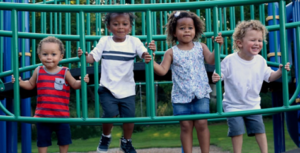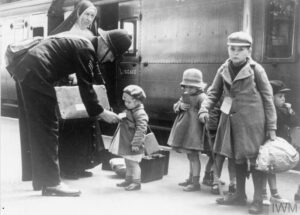By Jackie Musgrave (Programme leader, Early Childhood and Education Studies [Primary], The Open University.

The state of children’s health has been a cause for concern since the start of this century, not just physical health, but mental health conditions are increasingly being recognised and diagnosed in young children. In England in 2017, the Royal College of Paediatrics and Child Health reported that 10% of children were diagnosed with a mental health condition. The figures are similar in Scotland and Wales whilst in Northern Ireland, it has been stated that more than 20% of young people suffer from ‘significant mental health problems’ by the time they reach age 18. Many other children show signs associated with mental ill-health, such as anxiety and depression, but are not formally diagnosed. There are multiple factors that influence children’s enjoyment and experiences of life; some are ‘within’ each child, such as their personality or level of resilience. External factors also influence children’s mental health, such as living conditions or family and other relationships. In addition, there are global influences, such as a country’s geographical location and political situation, as well as health-related global events, such as the Covid pandemic.
The current focus on and awareness of young children’s mental raises some very important points that I would like to discuss and would welcome your thoughts about. First, I think it is helpful to be aware that children have always experienced mental health illness, but it wasn’t always recognised as such. This lack of recognition was partly because of the status of children in society. In the 19th century, many children lived in extreme poverty and for those who were not part of a family, were vulnerable to exploitation by adults. The novels of Charles Dickens illustrated the hardship that children endured, think of Oliver Twist, an orphan forced to work as a thief living with a gang leader in circumstances that we consider to be child slavery. Or think about the small boys who were forced to climb up chimneys to clean them, often being ‘encouraged’ to do their job by having a fire lit in the grate below their feet, so they would climb up quickly. It was not an unknown event for the chimney sweep boys to get stuck and die in the chimneys. Moving forward to the second world war, (1939-45) children as young as 3 were taken away from their homes and families in the city centres to rural areas to reduce the risk of injury or death because of the enemy bombs.

The ‘evacuees’ were homed usually with people they didn’t know for the duration of the war. Whilst many survived the experience, some endured sexual and physical abuse and it is likely that a significant number of evacuees experienced feelings of sadness, despair and abandonment because of the separation from their parents and families. As we know now, adverse childhood experiences can cast as Michael Rutter (1998) said, ‘a long shadow’, often into adulthood.
The second important point that I would like to raise is that, even though it appears that there is an explosion in the number of children with a diagnosable mental illness, the increase is partly because of our increased knowledge and awareness of this issue. Some children have always shown the signs and symptoms of mental illness, but it wasn’t recognised as such.
The final important point I would like to make is that despite the gloom that is often portrayed in the media about children and their mental health, there is a great deal that all adults can do to improve children’s mental health. This is especially the case for practitioners working with very young children. Think about the principles that are embedded in practice, such as communicating with and listening to babies and young children. Forming positive and caring relationships with children in the absence of their parents while the children are in your care and how your knowledge of each unique child enables you to identify and meet their needs. Creating an environment that gives them opportunities to play, indoors and out, to make friends and explore, all of the everyday routines and practice that are part of high quality education and care contribute to children’s wellbeing and in turn this can promote good mental health. Of course, this is not in anyway intended to trivialise the matter, sadly some children will develop a diagnosable mental health condition that require interventions to try and minimise the impact on the child and their family. However, please remember that what you do every day, and may take for granted, can contribute to improving babies and children’s wellbeing and supporting their mental health.
Early Childhood @ the Open University have produced a course, ‘Supporting children’s (0-8) mental health and wellbeing’. This introductory course is free and can be accessed online here
References
Royal College of Paediatrics and Child Health (2017) State of Child Health Report Available from https://www.rcpch.ac.uk/sites/default/files/2020-02/SoCH%202017%20UK%20web%20updated%2011.09.18.pdf accessed 29 February 2020
Rutter, M., Giller, H. and Hagell, A. (1998) Anti-Social Behaviour in young people. Cambridge: Cambridge University Press
Further reading
BBC (2019) Is young peoples’ mental health getting worse? Available from https://www.bbc.co.uk/news/health-47133338 accessed 20th September 2019
